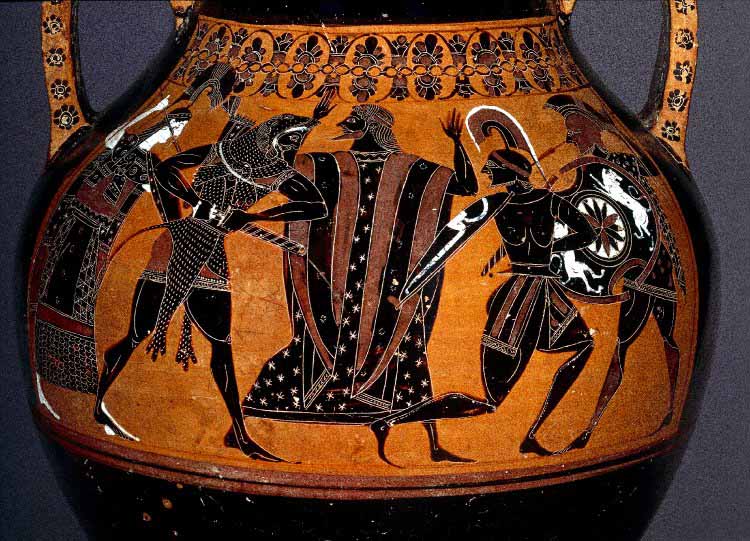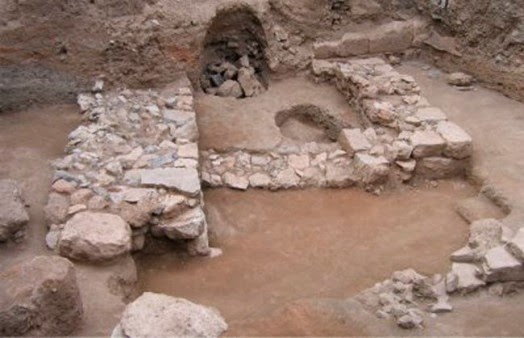I have some fear that if we don't comment on this fine piece of AH, it may wither. I had a rather long reply going to the post a couple back that introduced us to the "Olikan" religious tradition that had developed among the Hellenes, but I realized it was just so much verbal treading water; I was not sure what to think or say because we actually don't know enough about the movement yet to justify any of the tangents I was tending to take it on.
Now this post I certainly have some reactions to! (As I've had to others where I've stayed silent, perhaps after days of typing...

) C. Bottal gives as eloquent and reasoned a defense of the practice of oligarchic history as I've ever seen, and in my opinion earns himself an honorable place up against a blood-stained wall to be rebutted by
tutanoxoi (or whatever the proper plural would be, can't tell if it is a Greek, Celtic, or whatnot sort of word) in arms. After such an introduction (some of my favorite people have been introduced to me by the calumnies of their foes

) I was rather hoping Matta would write in words of fire, a fire heated by and illuminating a devastating logic. That Matta himself is rather mild and unassuming after all this is not too much of a letdown either, like his century-later student and critic Larsun I see him as "a man of the people out of necessity, not inclination;" his insights were fundamentally true for the same reasons democracy is superior to oligarchy. In so speaking and feeling of course I speak and think as a polemical democrat!

And perhaps in this ATL, "democrat" does not mean what it has come to mean in modern English; it could well be that the word is strictly and properly applied solely to the Athenian system that ITTL failed to defeat Xerxes, and the use of the term ITTL highlights the shortcomings rather than correspondences to TTL's populism.
(And by the way, is "populism" itself a translation from some completely different term, because of course Rome is sidetracked ITTL? Or are other Latin languages close enough to OTL Roman Latin that the term has slipped into the linguistic stew of Etruscan, Greek, Italian dialects, Celtic and the Olikanian deities alone know what all else ("Larsun" seems to have a quite Germanic name--though it might just as well be Latin!

) and the root still has its various branches here?)
Anyway it is plenty amusing to someone who has spent as much time as I have in the halls of academia, particularly in the company of an English major in the late 90s and early 2000s in schools where postmodernism reigned nearly supreme, to read the introductory polemics. In history, PoMo as I knew there seemed reasonable enough, if a bit flighty. But watching it run rampant in the English department might have outed my inner reactionary--though personally I felt then and feel now, it is extreme postmodernism that is reactionary and does not know it, that circles back to the reactionary stand of the Bottals they think they have left so far behind them.
It may be that I'm too hidebound in my materialism, perhaps. Yet I've never felt that sensible materialism must blind one to the purely cultural and superstructural, or to deny its importance--just that the importance of perceptions and frames of vision is relative to the material foundations, and relevant to them. One can't understand Rome solely by analysis of crops and dietary habits--but they sure do give us insights. As does the realization that lead poisoning was probably a pervasive thing.
So I'm not sure what to make of the academic quarrels of TTL's 1500s or the new, apparently more democratic, consensus (if consensus it is, but Larsun seems comfortable enough, not desperate) of the 1600s. Should I pigeonhole it in terms of a Marxist necessary infrastructural level of development and compare this TL's 17th Century to our 19th? Or reflect that had the British Commonwealth gone on a bit longer, a comfortable academic like Larsun might take as commonplace notions that would get his grandfathers (or grandchildren!) beheaded for
lese majeste and high treason, and that it would not be too strange for something not entirely unlike Larsun's text to emerge in Cromwell's Commonwealth--which was firmly of its own Seventeenth Century?
I'm rather inclined to think that this TL's centuries are clearly somewhat more advanced than their OTL counterparts, that Larsun and even Matta must be the contemporaries of an advanced stage of development of science and scholarship in general at least comparable with the OTL early 19th Century, if not even later. For me that implies a connection with a highly technological and advancing society--indeed, the notion of progress, that with perseverance, faithful effort, and patience time will bring forth good and better things, seems essential to an optimistic populism. Otherwise the criticism that the rabble seek merely to Level their betters down to the same low level seems too pointed; it is important rather that the rabble should assume they have improved themselves and will continue to improve, and already surpass their self-named "betters" in important and relevant ways, and that they will master every art the aristocrats hold to their own forte, insofar as they are useful and good, while avoiding pitfalls and follies.
Can such a spirit be transposed to any age of human history, or must it necessarily wait until the rise of something very much like capitalism? I could go either way, honestly--I can imagine something like a Sparticist/Gracchi fusion movement, and a radicalized Rome that abolishes slavery and forms some sort of proto-socialist regime.
The thing is, such movements, which do exist in recorded history, do tend, until very modern times, to take the form of a religious movement, as indeed the English Commonwealth (and its most radical fringes) did. They tend to become the instruments whereby a new aristocracy and new monarchy are formed to supplant the old. Where they are not tricked or simply beaten into submission (and however brought down, a reign of terror of reaction always follows) they mutate over a generation or so into "meet the new boss, pretty much the same as the old boss." Perhaps the distinctions between old and new elite are significant, and key to how the new one survives while the old one could not. But the notion of a commonwealth of, by and for the people seems limited to poor rustics living in bastions, and vulnerable to being crushed, protected mainly by the undesirability of their hardscrabble holdings, and transitory and unstable among even them, until capitalism radically transforms the everyday conditions under which people live.
-------------------
In Larsun's retrospective on Matta, I wonder if he perhaps gives a little too much ground in places to Matta's latter-day critics and revisionists. He makes much of the fact that there is no evidence the Persians themselves participated in the twin rites of Messenia that Matta points to as mechanisms binding this particular Hellenic people (the former helots of the Spartans) to the Achaemenid regime. But so what if the Persians themselves didn't think of it, and had no hand in the evolution of the rites? The Messenians are the actors here; it was crystal clear to them they owed a great debt to Xerxes, and that their continued freedom and prosperity might well fail with the fall of the Achaemenids, their protectors. If Larsun feels it is a blow against Matta's arguments that the Achaemenid kings and their satraps and advisers themselves were not the stage managers of these Hellenic rites, but rather they were a movement of Hellenes toward identification with the great "Median" empire, I wonder if perhaps he doesn't understand his Matta! Or maybe Matta fell far short of the notion that the ruled are actors as well as the rulers, and merely opened doors he himself failed to step through--but reactionaries like Bottal could see gaping open, and recoiled from.
-----------------------
One thing I realized about academia in general, which might not apply or anyway not as much in the hard sciences, but certainly seems to everywhere else--one gets ahead by "debunking" and to one's own satisfaction, demolishing the conventional wisdom that one first finds in one's own education. A generation taught by Marxists can be expected to turn on Marx, not necessarily for any other reason than it is necessary for the new generation to make a new mark.
Larsun has to find fault with Matta
somewhere, even if his main polemical thrust is against the anti-Mattaists. I fear it undermines him somewhat with me that he seems to overlook a very interesting point about the Messenians.








